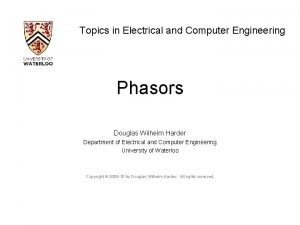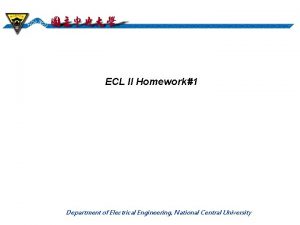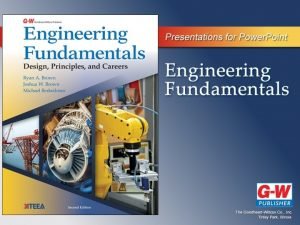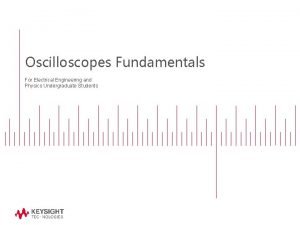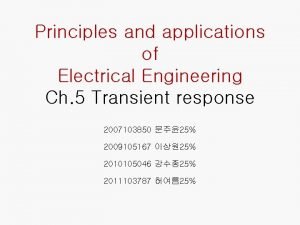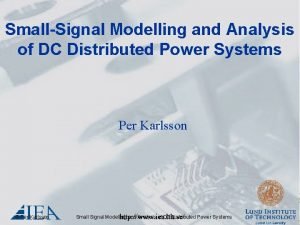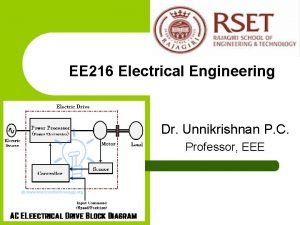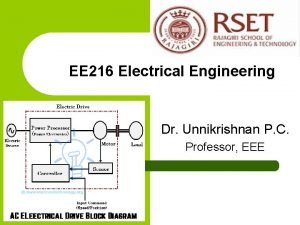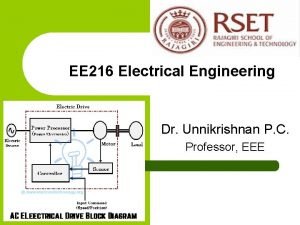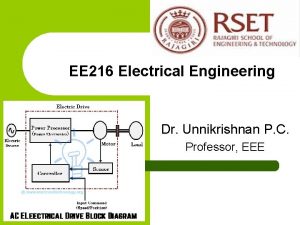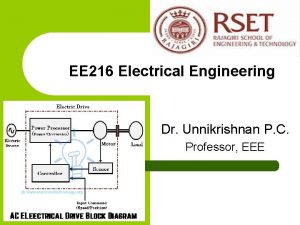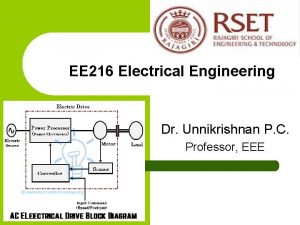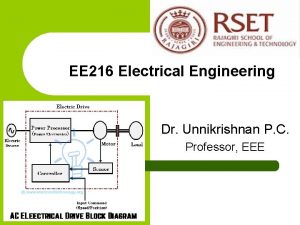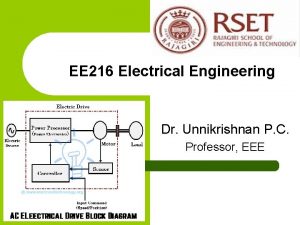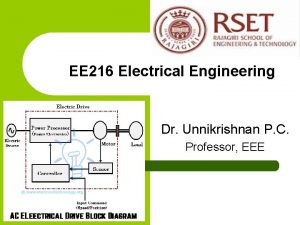EE 216 Electrical Engineering Dr Unnikrishnan P C










- Slides: 10

EE 216 Electrical Engineering Dr. Unnikrishnan P. C. Professor, EEE

Synchronous Motor

Synchronous Motors • Constant-speed machine • Propulsion for “Queen Elizabeth 2” – 44 MW – 10 k. V – 60 Hz – 50 pole – 144 r/min Queen Elizabeth 2 is an ocean liner built for the Cunard Line which was operated by Cunard as both a transatlantic liner and a cruise ship from 1969 to 2008. She was designed for the transatlantic service from her home port of Southampton, UK, to New York

Construction

Synchronous Motors ……… • Construction – Stator identical to that of an Alternator – Energize from a three-phase supply and develop the rotating magnetic field – Rotor has a DC voltage applied (excitation) – Rotor could be a permanent-magnet type

Rotating magnetic Field

Synchronous Motors (continued) Magnetic field of the rotor “locks” with the rotating magnetic field – rotor turns at synchronous speed. Force of attraction between stator poles and rotor poles - resulting in production of torque in clockwise direction

Methods of starting Synchronous Motor • Motor Starting by Reducing the supply Frequency If the rotating magnetic field of the stator in a synchronous motor rotates at a low enough speed, there will be no problem for the rotor to accelerate and to lock in with the stator’s magnetic field. The speed of the stator magnetic field can then be increased to its rated operating speed by gradually increasing the supply frequency, f , up to its normal 50 Hz

Motor Starting with an External Motor • Use a starting motor (pony motor) to bring the synchronous machine to near its rated speed (not exactly equal to it, as the synchronization process may fail). Then the output of the synchronous machine can be synchronised with its power supply system as a generator, and the pony motor can be detached from the shaft. Once the motor is turned OFF, the shaft of the machine slows down, the speed of the rotor magnetic field falls behind, momentarily and the synchronous machine continues to operate as a motor.

Motor Starting by Using Damper Winding • Damper windings are special bars laid into slots cut in the pole face of a synchronous machine and then shorted out on each end by a large shorting ring. the machine starts as a 3 -Phase induction machine due to the presence of the damper bars
 Phasors electrical engineering
Phasors electrical engineering Tel aviv university electrical engineering
Tel aviv university electrical engineering Fe spletna učilnica
Fe spletna učilnica Electrical engineering
Electrical engineering Ucla electrical engineering department
Ucla electrical engineering department Chapter 11 electrical engineering
Chapter 11 electrical engineering Electrical engineering
Electrical engineering Principle and application of electrical engineering
Principle and application of electrical engineering Umd ece faculty
Umd ece faculty The world says hello
The world says hello Electrical engineering
Electrical engineering
